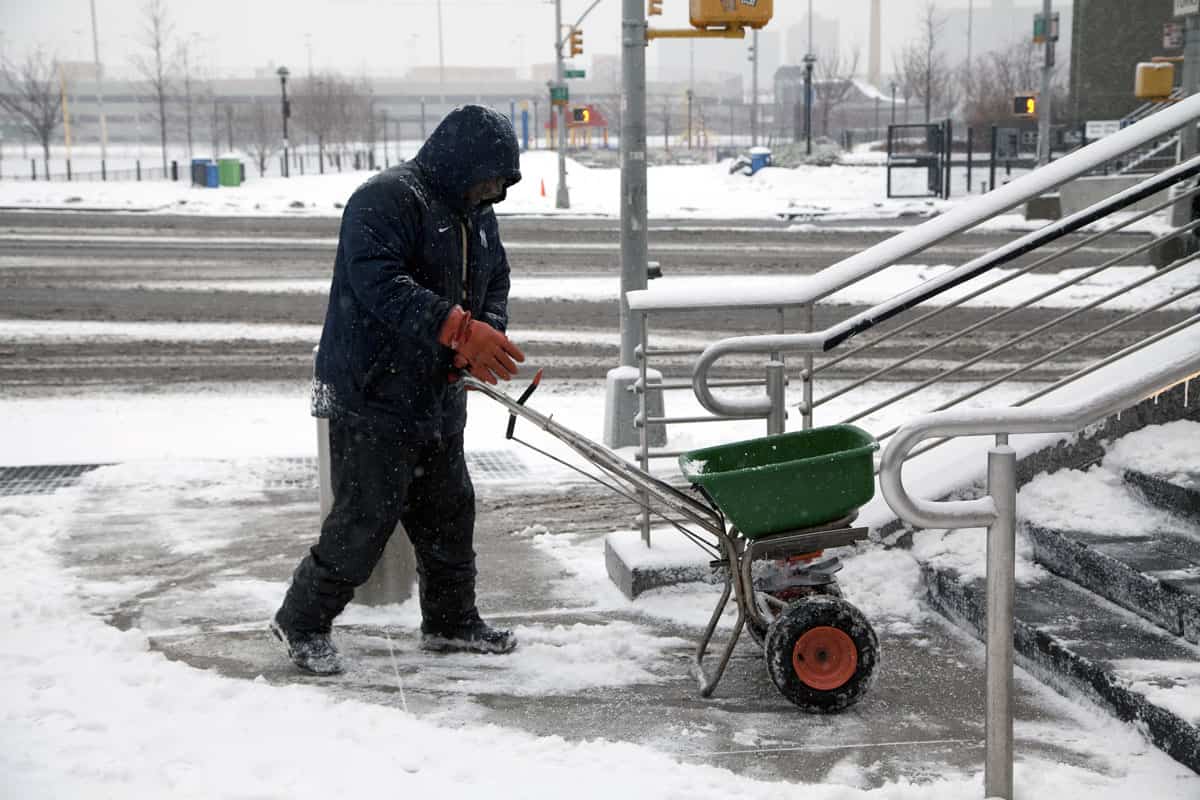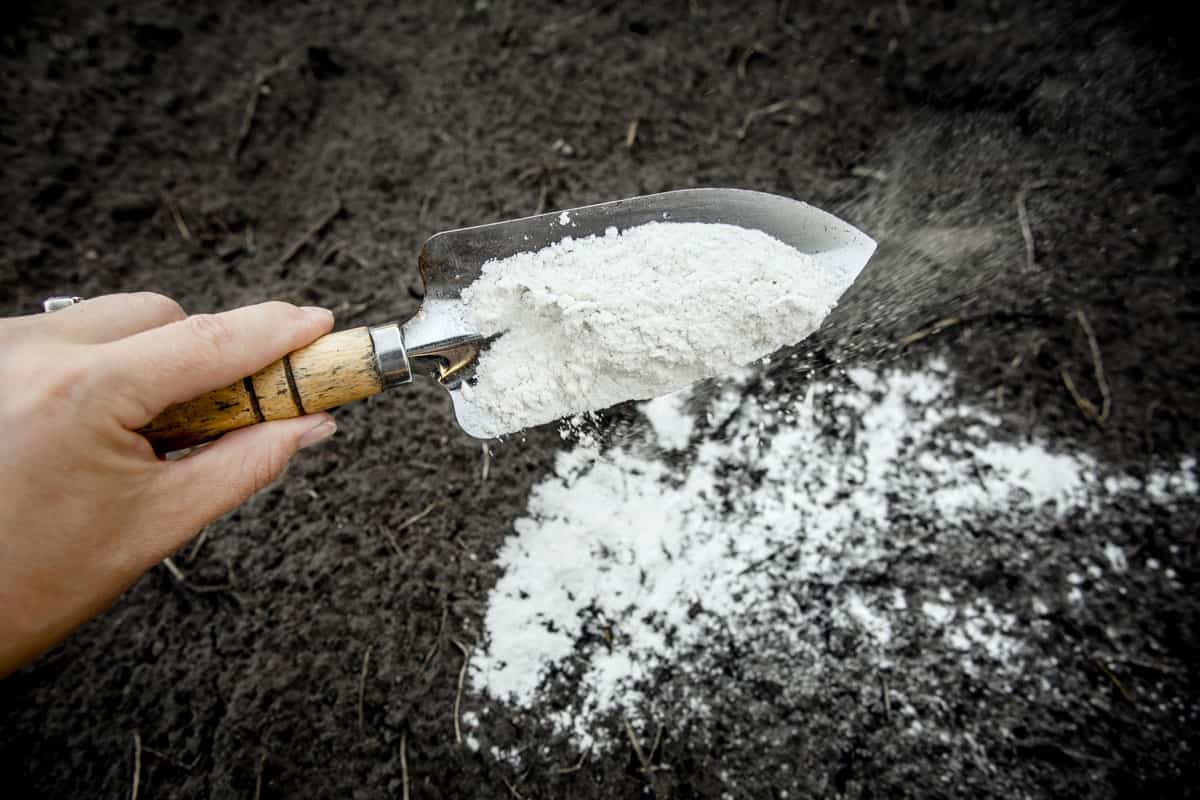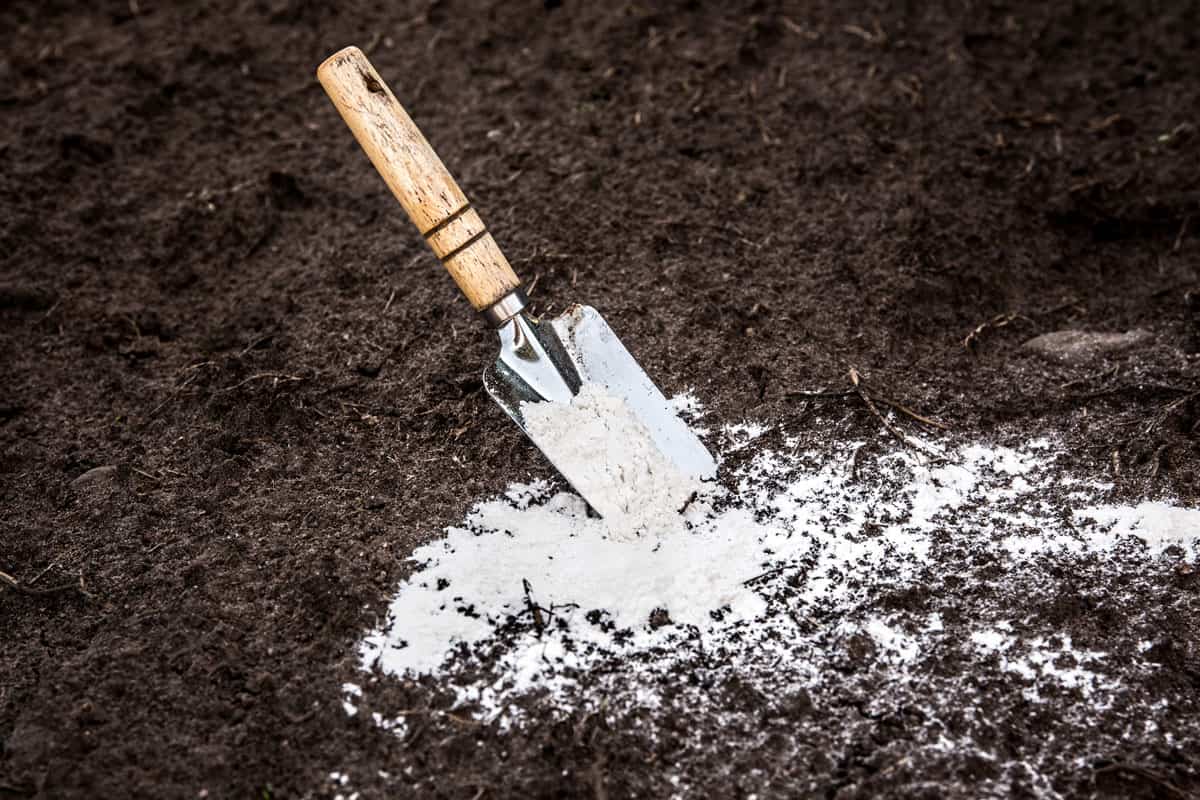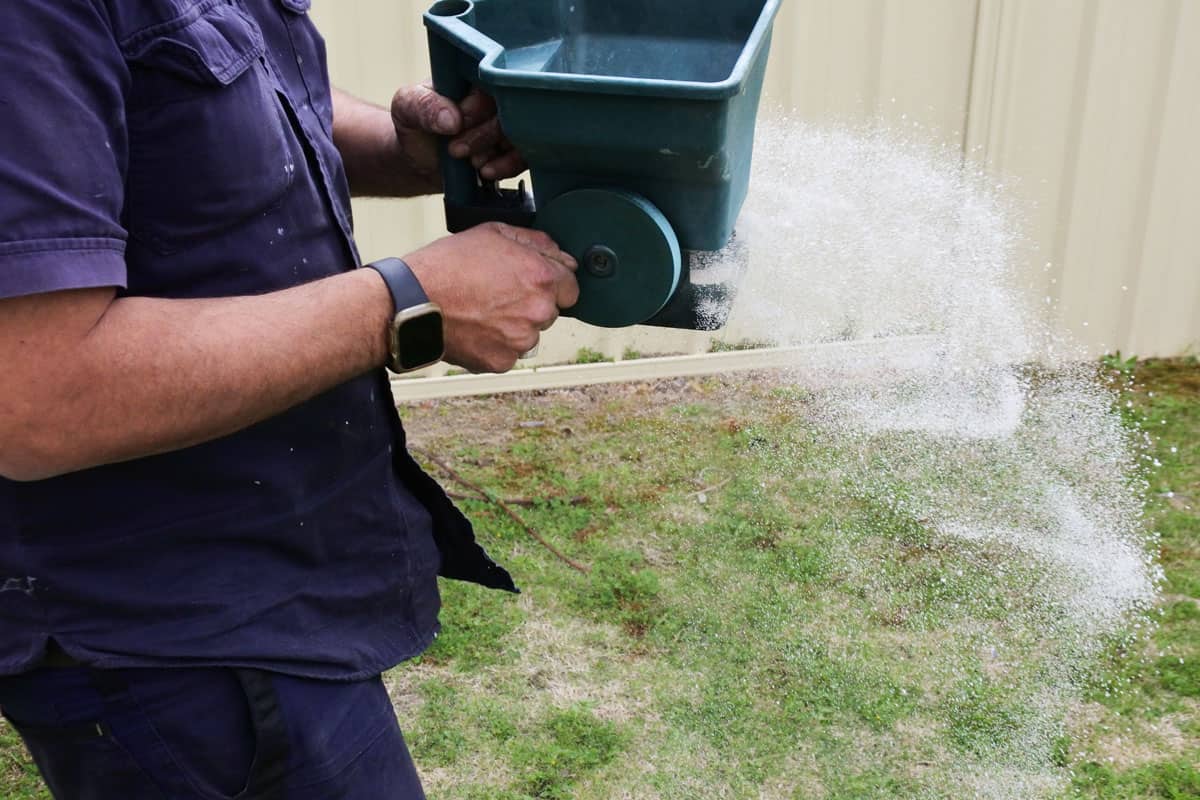In most homes, salt spreaders are very common, especially if you live in an area with heavy snowfall. But once winter is over, many people often wonder if these tools can be used for other purposes, like spreading lime. Well, we've done some research and have the answer below!
Most salt spreaders used at home lawns and gardens can also be used as lime spreaders when winter is over.
Pelletized lime is best for salt spreaders because it is dry and spreads easily. However, a drop or rotary spreader is the best lime spreader to use at home.
Knowing the right tools, you need for your lawn is vital because these investments will last a long time. In this post, we will talk about how to put lime on your soil. We will also discuss the best lime and spreader you can use in your garden. With that said, let's begin!

Will A Salt Spreader Spread Lime?
One of the most used garden tools in winter is the salt spreader. These devices work by spreading salt or ice-melting solutions on the ground during the cold winter season.
A salt spreader is typical in areas that tend to get ice on the road, and these devices help make the ground less slippery during winter.
If you have a salt spreader at home, you're probably wondering if they have other uses when winter is over. They do tend to be bulky, and leaving them to be unused at a time seems to be impractical.

Typically, people leave their salt spreaders in the garage until next winter, but did you know you can use them for other things?
Most salt spreaders available in the market today are multi-purpose. Aside from spreading salt, you can also use them to apply lime.
A salt spreader can usually spread salt and other fine (or crystallized) substances on the ground. Fortunately, lime for use in gardens falls in this category.
What Type Of Lime Should I Use In My Spreader?

With salt spreaders being multi-purpose, you're probably wondering what kind of lime you can use on them. Most garden lime products are fine and dry, perfect for salt spreaders.
Make sure not to use moist lime products because they will clog the salt spreader during application.
The lime you use for the garden is labeled as garden lime or dolomitic lime. Typically, garden lime comes in powder form, but you'll also find pellet versions for easier applications.
When applying lime to the soil, remember to wear the proper safety gear (it can get very dusty) and use the right tools.
The most common lime used for gardens is pelletized lime. Not only is it easy to get, but it is also the easiest to apply on the ground. This lime can be spread using a salt spreader because its consistency is similar to rock salt.
Check out this pelletized lime on Amazon.
Gardeners who use pelletized lime prefer this consistency because it is the quickest and most consistent way to raise the pH of the soil.
Pelletized lime is also more accurate in the application and breaks down easier than other lime products. Aside from this, pelletized lime is also easier to transport than powdered lime.
Alternatively, you can still use powdered lime if you are more familiar with this type. Most lime in this form is ground into ultra-fine powder for ease of application.
This lime is best used in smaller areas because the fine powder can be easily mixed into the soil.
Get this dolomite lime on Amazon.
This kind of lime will help your plants improve their growth, and it also helps the fertilizer achieve its maximum performance.
Dolomitic lime also adds other nutrients to the soil, like calcium and magnesium.
What Are The Benefits Of Spreading Lime?

Using lime in the garden is usually done to help achieve healthy soil. Several benefits come with spreading lime, and it can change the health and quality of your growing plants.
Here are some of the advantages that you'll get when you use lime in your garden:
1. Change the pH level of the soil
The most crucial change lime makes to the soil is changing its pH level. If your soil has a pH level that veers to the very acidic side (or less than 5.5), you'll need to add lime to the ground.
Lime will increase the alkalinity of the soil to be more neutral or sweeter, and it will help the plants grow better.
2. Add more nutrients to the soil
When the soil is very acidic, it prevents the plants from allowing them to absorb the necessary nutrients from the ground. This results in wilted or sometimes yellowish-looking plants.
A high soil pH level promotes better nutrient absorption and helps spread the good bacteria in the soil. Garden lime also has additional phosphorus, zinc, and calcium for healthy plants.
3. Improve water penetration
A higher pH level for the soil makes it easier to rehydrate. Alkaline soil absorbs water better and helps retain more moisture, which the plant needs. This prevents drying out and rehydrates the plants' roots better.
What Are The Best Types Of Lime Spreaders?
If you're looking for the best spreaders to use for lime, it's always a good idea to look for garden tools that can serve multiple purposes.
Try to get a spreader that you can use for salt and ice melt during winter, and you can use it for lime or fertilizer for the rest of the year.
See this Scotts Elite Spreader on Amazon.
A broadcast spreader is one of the best tools you can have in your garden. They are multi-functional, and you should be able to get the most out of them, whether winter or spring.
This broadcast spreader will ensure that the product will be applied evenly and accurately on the ground while you use them.
Get this Chapin residential salt spreader on Amazon.
Another option for your garden is a residential salt spreader with an auger that prevents clogging on the machine.
These salt spreaders can also be used for lime because their front and side baffle systems provide an accurate application on the ground while in use.
Grab this Agri-Fab tow spreader on Amazon.
If you have a large area that needs the application of both salt and lime, you'll need a tow spreader. These tow-spreaders can handle more products and make the job easier for such a big area.
All you need to do is load them up on a riding mower so you can cover more areas for application.
Do I Need To Use Lime In My Yard?

While garden lime is very beneficial for soil health, it might not be necessary for all gardens. Adding lime to the soil can significantly alter its chemistry and affect the plants.
So while adding lime sounds beneficial, your garden may or may not need it.
Typically, you'll want to know the pH of the soil to match whatever you wish to plant in them. The pH of the soil affects the plants because most plants (ornamental or edible) prefer soil with a pH of about 5.5 to 6.5.
If the pH of your soil doesn't reach this range, your plants won't grow well despite constant fertilizing or watering.
To know the pH level of your garden soil, getting a test sample before planting anything is essential. In a pinch, you can use a pH soil test kit available in stores to get a ballpark range of the pH levels of your soil.
Check out this soil test kit on Amazon.
However, the best way to know the pH levels of your soil is by sending it to a professional. Your local county extension office should be able to give you a complete result about your soil pH levels.
They can also help you with recommendations on how to lime your lawn and how much you should apply to the soil.
Our Final Thoughts
Adding lime to your gardens benefits the soil, especially if you plan to balance its pH. The easiest way to apply lime to the ground is by using a drop or rotary spreader, but if you already have a salt spreader at home, it can do the task for you.
Make sure to use the right lime to avoid clogging the spreader, and you'll have a healthier garden when spring rolls around.
And while we have your attention, check out these related posts:






